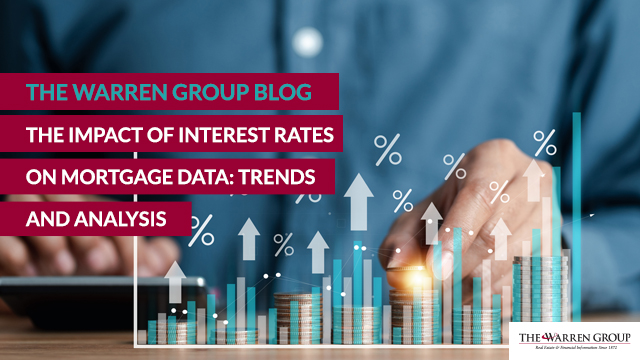In the world of real estate and mortgage finance, few factors hold as much sway as interest rates. In fact, mortgage rates recently moved to their highest levels in more than twenty years, with the average 30-year fixed mortgage rate increasing to 7.41 percent according to the Mortgage Bankers Association.
Whether you’re a seasoned industry professional or just dipping your toes into the market, understanding the impact of interest rates on mortgage data is crucial. In this blog post, we’ll explore the trends and analysis surrounding this pivotal element of the industry.
The Interest Rate-Mortgage Data Connection
Interest rates play a central role in shaping the real estate and mortgage landscape. When the Federal Reserve adjusts rates, it sends ripples throughout the market. Let’s delve into some key points of interest rate influence on mortgage data.
Mortgage Affordability
Interest rates directly affect the cost of borrowing money. When rates are low, mortgages become more affordable, attracting more homebuyers. Conversely, higher rates can deter potential buyers due to increased monthly payments.
Refinancing Activity
Mortgage data shows a strong correlation between interest rate fluctuations and refinancing activity. Lower rates typically lead to a surge in refinancing applications as homeowners seek to reduce their monthly payments or tap into home equity.
Home Price Appreciation
Rising interest rates can impact home prices. As rates climb, some buyers may be priced out of the market, potentially slowing down home price appreciation in certain areas.
Recent Trends and Analysis
Now, let’s take a closer look at recent trends and analysis regarding the impact of interest rates on mortgage data.
Post-Pandemic Rate Environment – In response to the economic uncertainty caused by the COVID-19 pandemic, interest rates hit historic lows. This fueled a robust housing market, with record-breaking home sales and increased refinancing activity. The industry experienced a boom due to these favorable rate conditions.
Rate Hikes and Market Adjustment – As the economy rebounds and inflation concerns grow, the Federal Reserve has indicated its intention to raise interest rates gradually. This could lead to a shift in the market. Mortgage data may show a slowdown in home sales and a decrease in refinancing as rates climb.
The Impact on Mortgage Products – Rising rates may also impact the popularity of mortgage products. For instance, adjustable-rate mortgages (ARMs) may become less attractive compared to fixed-rate mortgages, which offer stable payments in a rising-rate environment.
Regional Variations – It’s important to note that the impact of interest rates on mortgage data can vary by region. Some areas may be more resilient to rate hikes due to strong local economies, while others may experience more significant market adjustments.
In the world of real estate and mortgage data, interest rates are a constant factor that shapes market dynamics. Understanding the impact of interest rates on mortgage data is essential for industry professionals to make informed decisions. Recent trends suggest that while low rates have fueled growth, a rising rate environment may introduce new challenges. Staying vigilant and adaptable in response to these changes is key to thriving in this dynamic industry.
As we move forward, keeping a close eye on interest rate trends and their effects on mortgage data will be instrumental in navigating the ever-evolving real estate landscape. Stay tuned for further updates and analysis as the market continues to evolve.
Want to learn more about data solutions and how they help impact your bottom line? Schedule a meeting with a data specialist today!


Recent Comments